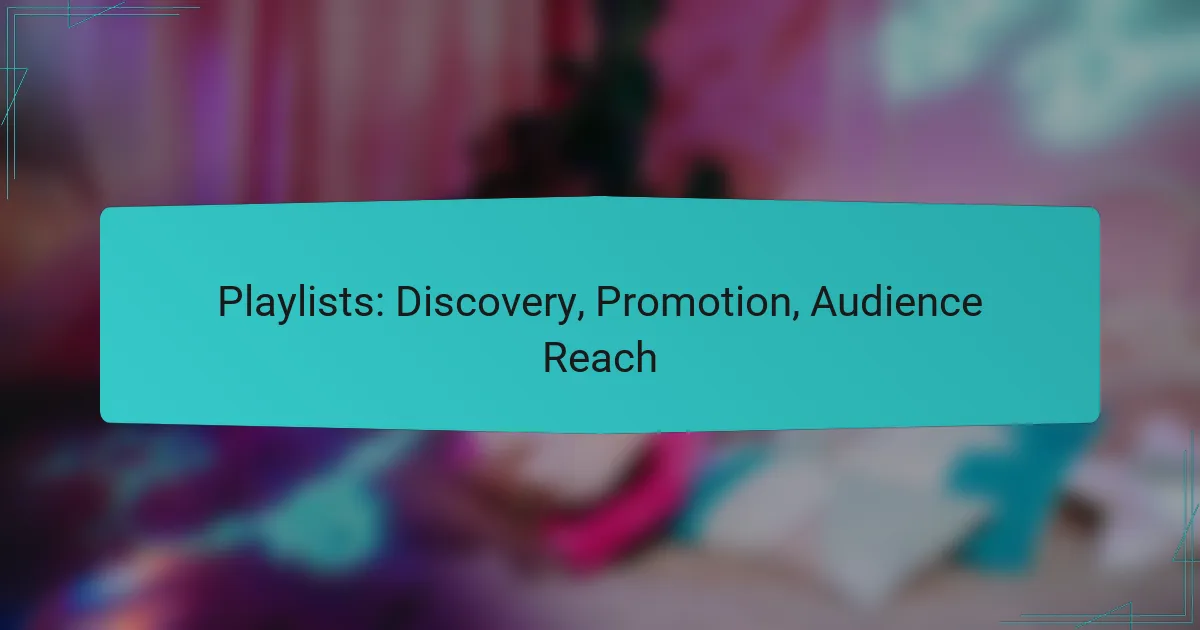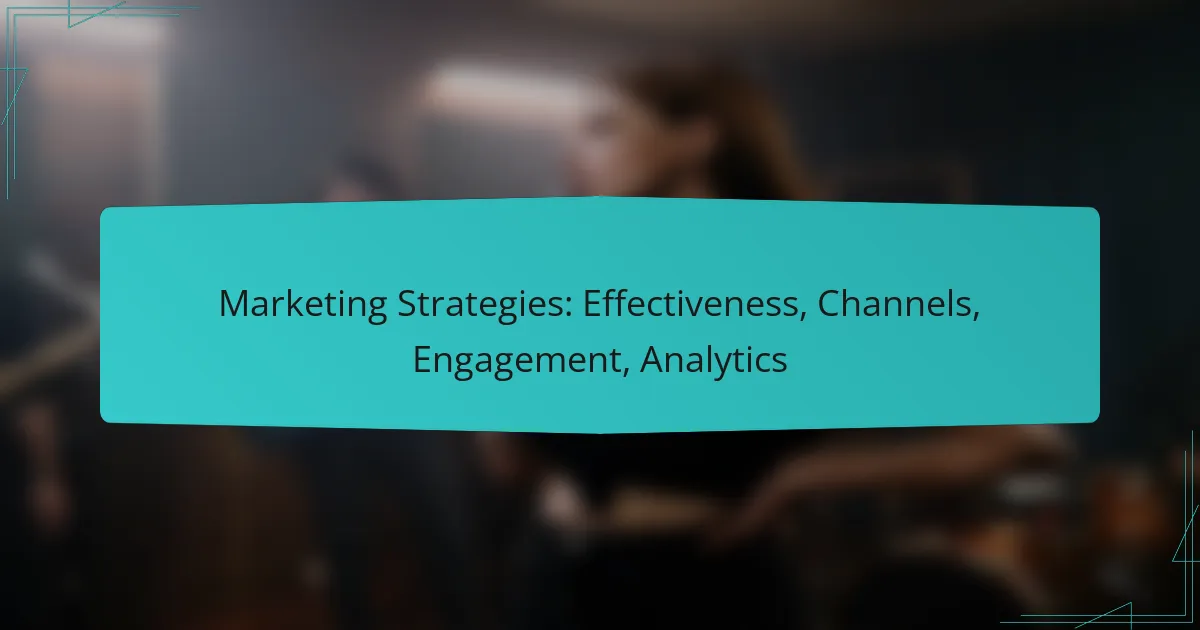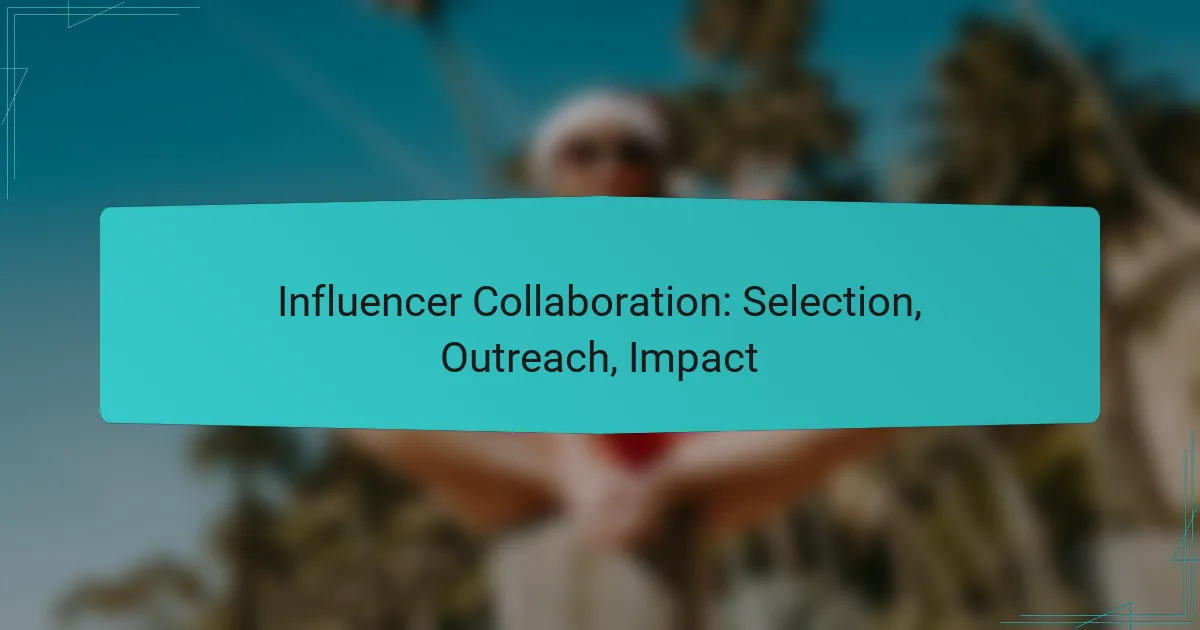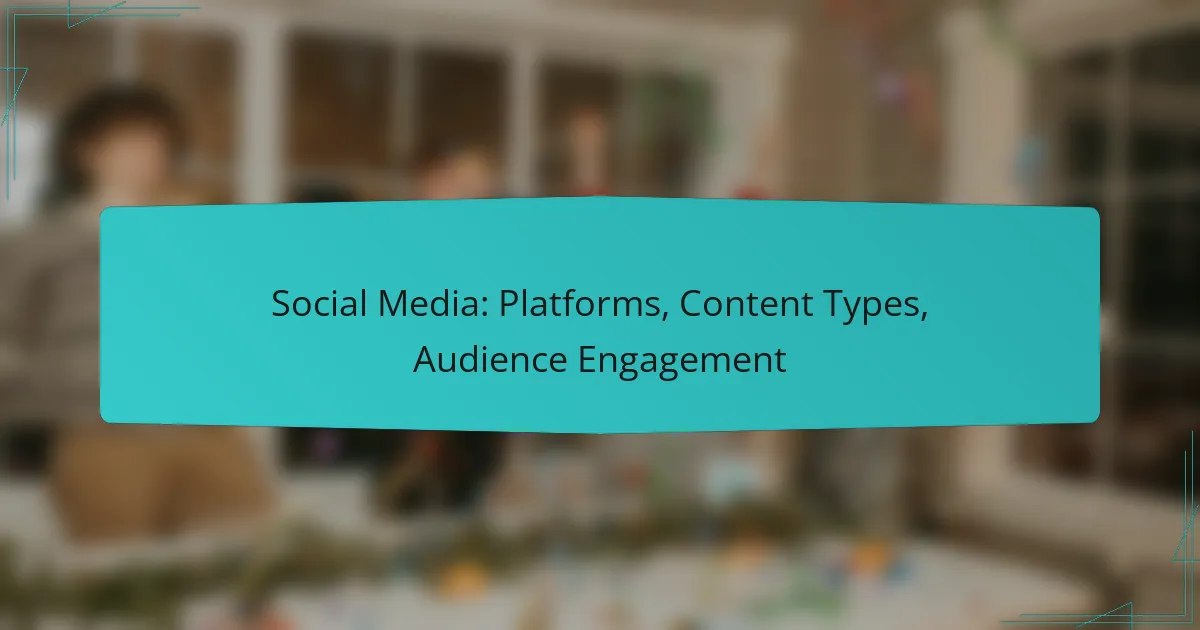Playlists play a crucial role in digital marketing by enhancing audience reach and facilitating music discovery. By curating themed collections, marketers can effectively engage users and encourage exploration of related content. Additionally, strategic promotion of playlists can maximize visibility and connect artists with new listeners, bridging the gap between creators and their potential fanbase.
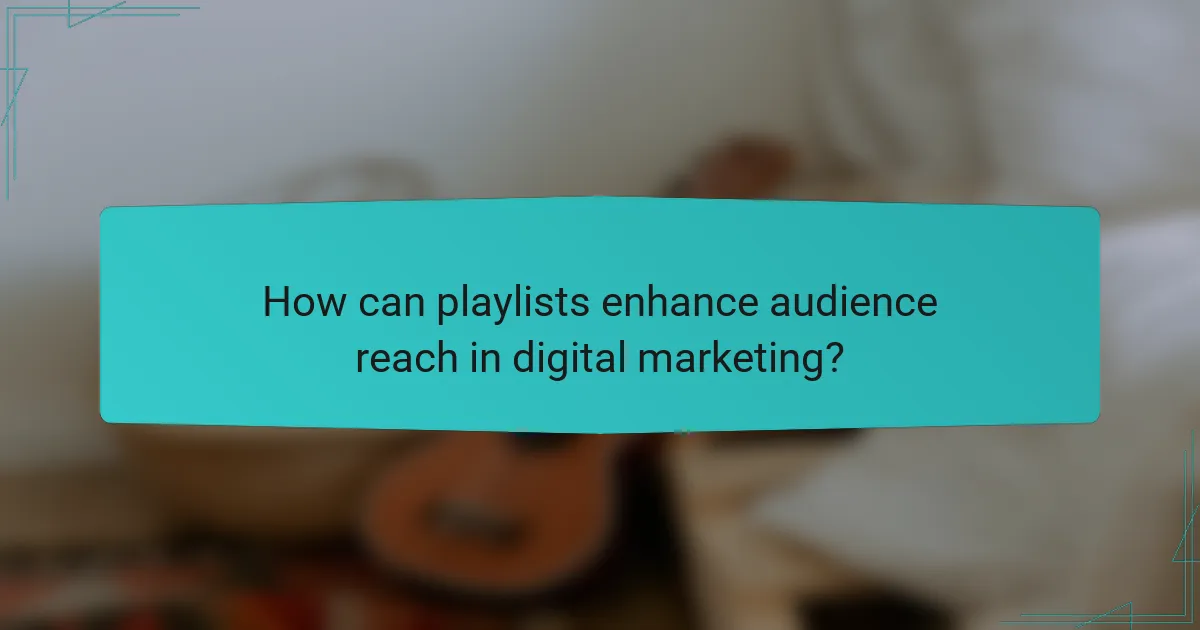
How can playlists enhance audience reach in digital marketing?
Playlists can significantly enhance audience reach in digital marketing by organizing content in a way that attracts and retains viewer attention. By curating specific themes or topics, marketers can engage users more effectively and encourage them to explore related content.
Increased engagement through tailored content
Tailored playlists cater to specific audience interests, which can lead to higher engagement rates. By analyzing viewer preferences and behaviors, marketers can create playlists that resonate with their target demographic, keeping them engaged for longer periods.
For example, a fitness brand might create playlists featuring workout videos, nutrition tips, and motivational talks. This focused approach not only captures attention but also encourages viewers to return for more content that aligns with their interests.
Broader distribution via social media platforms
Sharing playlists on social media platforms can significantly broaden their reach. By leveraging platforms like Instagram, Facebook, and TikTok, marketers can tap into existing networks and encourage sharing among users, amplifying visibility.
Utilizing eye-catching visuals and engaging descriptions when promoting playlists can enhance their appeal. Additionally, incorporating hashtags relevant to the content can help attract a wider audience who may be searching for similar themes.
Collaboration with influencers for wider exposure
Collaborating with influencers can provide playlists with greater exposure and credibility. Influencers often have dedicated followers who trust their recommendations, making them ideal partners for promoting curated content.
Marketers should consider reaching out to influencers whose audience aligns with their target market. This partnership can involve co-creating playlists or having influencers share existing ones, effectively driving traffic and engagement through their established channels.
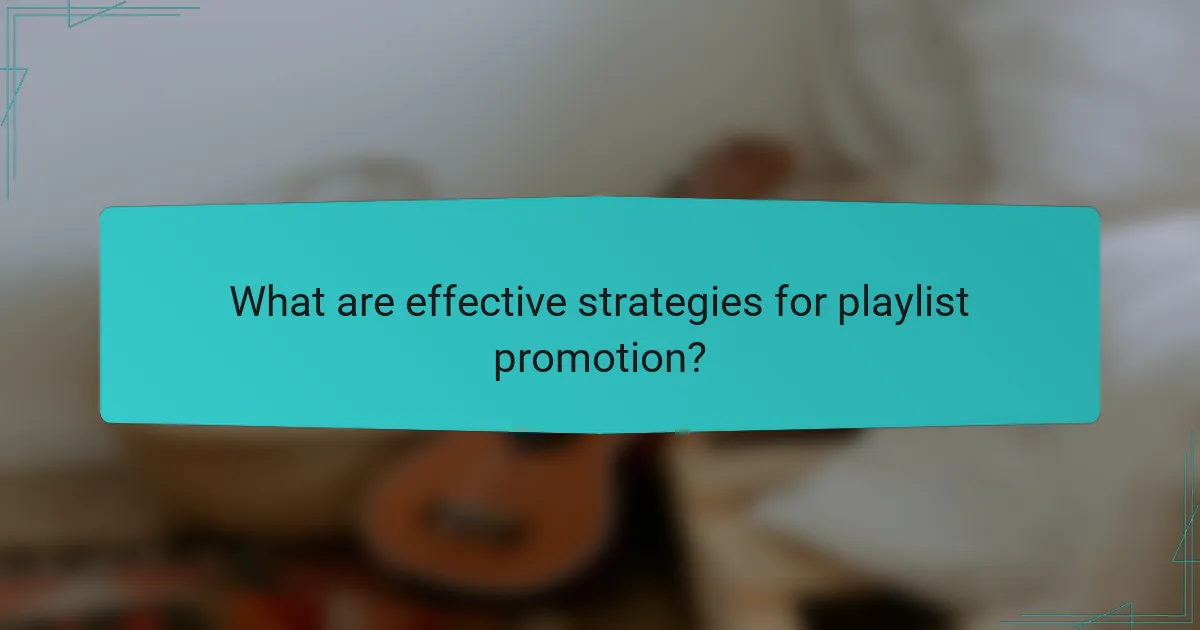
What are effective strategies for playlist promotion?
Effective playlist promotion strategies focus on maximizing visibility and engagement through various platforms. By utilizing editorial playlists, creating shareable content, and leveraging email marketing, artists can significantly enhance their audience reach.
Utilizing Spotify’s editorial playlists
Spotify’s editorial playlists are curated by the platform’s team and can provide substantial exposure for artists. To get featured, submit your music through Spotify for Artists at least a week before your release date. Highlighting unique aspects of your track in the submission can increase your chances of selection.
Consider the genre and mood of your music when targeting specific playlists. Research similar artists who have been featured and analyze their sound and promotional strategies. Engaging with your audience on social media about your playlist placements can also help drive more listeners to your music.
Creating shareable content for YouTube
YouTube is a powerful platform for promoting playlists through engaging video content. Create visually appealing videos that complement your music, such as lyric videos or behind-the-scenes footage. Ensure your content is optimized for sharing by including clear calls-to-action and relevant hashtags.
Collaborate with influencers or other artists to expand your reach. Encourage viewers to share your videos by offering incentives, such as exclusive content or giveaways. Regularly update your channel with fresh content to keep your audience engaged and attract new listeners.
Leveraging email marketing campaigns
Email marketing remains a highly effective tool for playlist promotion. Build a mailing list by offering exclusive content or updates in exchange for email subscriptions. Regularly communicate with your audience about new releases, playlist features, and upcoming shows to maintain interest.
Segment your email list based on listener preferences to tailor your messages effectively. Use engaging subject lines and concise content to increase open rates. Monitor your campaign performance and adjust your strategies based on what resonates most with your audience.
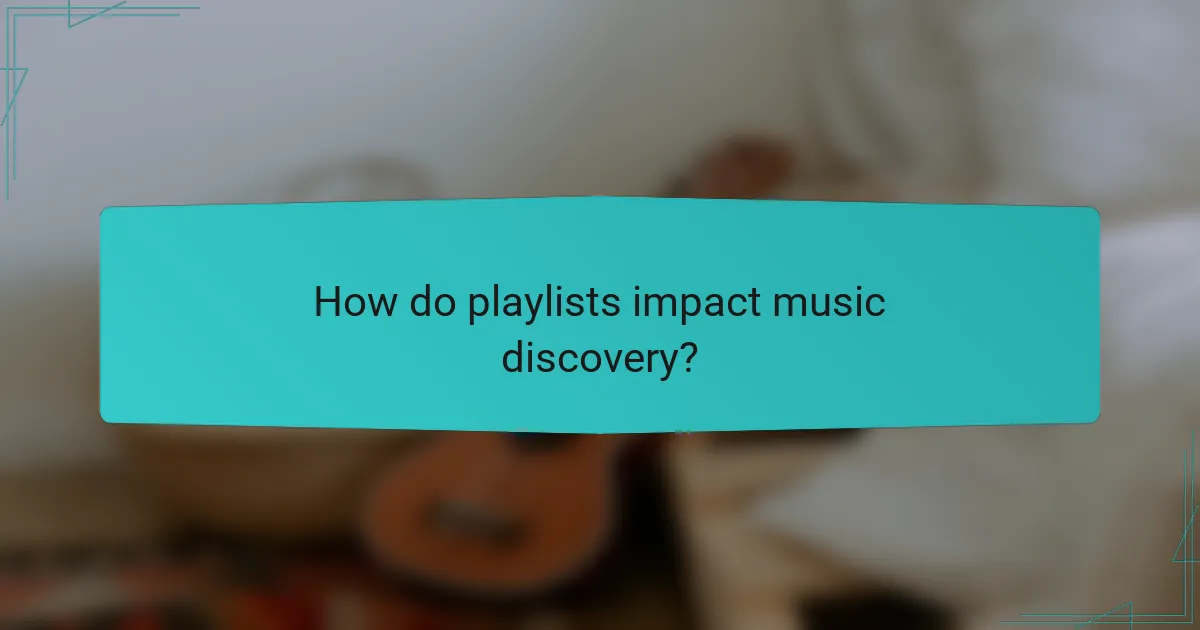
How do playlists impact music discovery?
Playlists significantly enhance music discovery by curating tracks that listeners may not find otherwise. They serve as a bridge between artists and audiences, allowing new music to reach potential fans through organized collections.
Algorithm-driven recommendations
Algorithm-driven recommendations utilize data analytics to suggest music based on user behavior and preferences. Streaming platforms like Spotify and Apple Music analyze listening habits, creating personalized playlists that introduce users to new artists and genres.
These algorithms often consider factors such as song popularity, user interactions, and even the time of day. As a result, listeners frequently discover tracks that align with their tastes, increasing engagement and satisfaction with the service.
User-generated playlists for niche genres
User-generated playlists play a crucial role in promoting niche genres that may not receive mainstream attention. Enthusiasts create and share playlists that highlight specific styles, allowing lesser-known artists to gain visibility among dedicated listeners.
These playlists can be found on various platforms and often feature themes or moods, making it easier for fans to explore music that resonates with their interests. Engaging with these playlists can help artists connect with passionate audiences and build a loyal following.
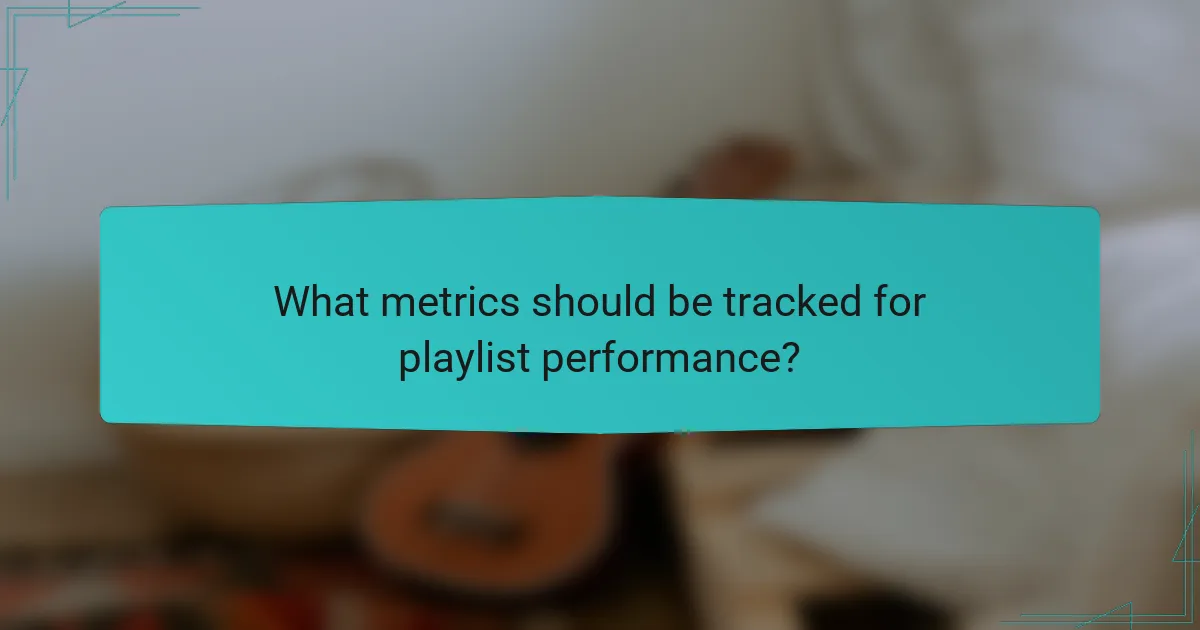
What metrics should be tracked for playlist performance?
To effectively evaluate playlist performance, focus on key metrics such as listener engagement rates and conversion rates from playlists to purchases. These metrics provide insights into how well your playlists resonate with audiences and drive desired actions.
Listener engagement rates
Listener engagement rates measure how actively users interact with your playlist. This includes metrics like the average listening time, skip rates, and repeat listens. High engagement typically indicates that the content is appealing and retains listener interest.
To track engagement, consider using analytics tools provided by streaming platforms. Aim for an average listening time that exceeds a few minutes, as this often correlates with higher listener satisfaction. Regularly assess which tracks are skipped frequently to refine your playlist selections.
Conversion rates from playlists to purchases
Conversion rates from playlists to purchases indicate how effectively your playlist drives sales or other desired actions, such as streaming subscriptions or merchandise purchases. This metric is crucial for understanding the financial impact of your playlists.
To calculate conversion rates, divide the number of purchases made after playlist exposure by the total number of listeners. A conversion rate of a few percent is common in the music industry, but aim to optimize your playlists to improve this figure. Consider using calls to action within your playlists or promotional links to enhance conversion opportunities.

What are the prerequisites for creating successful playlists?
To create successful playlists, you need a clear understanding of your target audience, current music trends, and effective promotion strategies. These elements help ensure that your playlists resonate with listeners and reach a wider audience.
Understanding target audience preferences
Identifying your target audience’s preferences is crucial for playlist success. Consider factors such as age, location, and listening habits to tailor your selections. For example, younger audiences may prefer pop and hip-hop, while older listeners might gravitate towards classic rock or jazz.
Engage with your audience through social media or surveys to gather insights on their favorite artists and genres. This feedback can guide your playlist curation, ensuring it aligns with what listeners want to hear.
Researching trending music and genres
Staying updated on trending music and genres is essential for keeping your playlists relevant. Use platforms like Spotify, Apple Music, or YouTube to monitor charts and discover emerging artists. Regularly check genre-specific playlists to identify popular tracks that can enhance your own playlists.
Consider using tools like Shazam or music blogs to uncover new hits and underground gems. Aim to include a mix of well-known tracks and lesser-known songs to create a diverse listening experience that appeals to a broader audience.
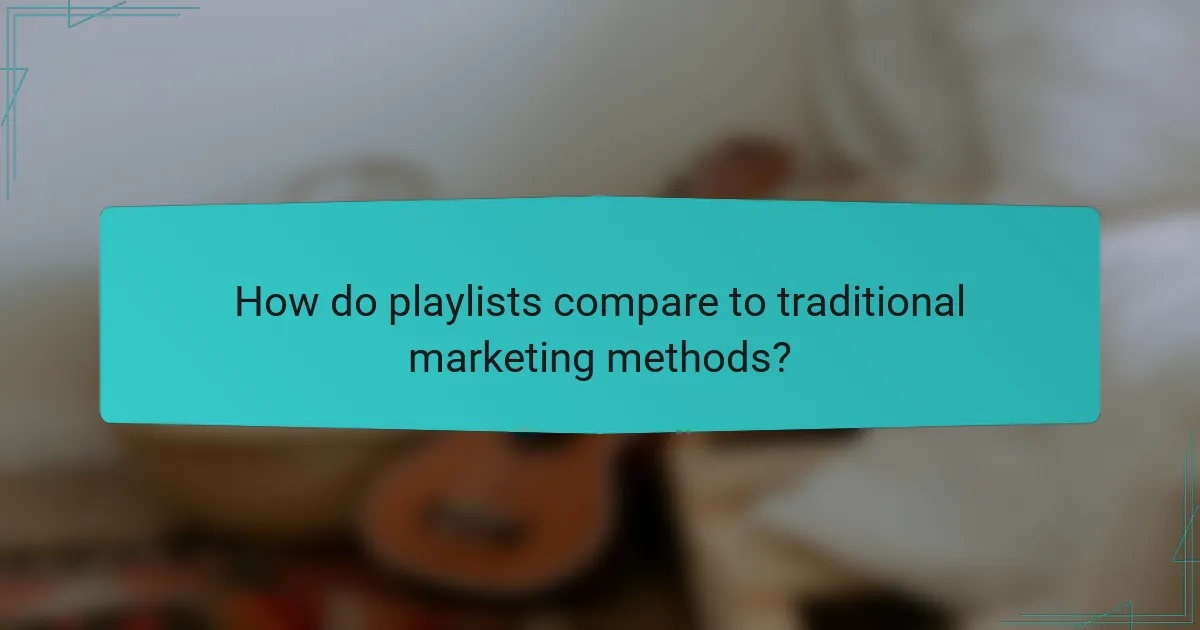
How do playlists compare to traditional marketing methods?
Playlists offer a modern approach to music promotion that contrasts sharply with traditional marketing methods. Unlike conventional advertising, which often relies on high costs and broad reach, playlists provide targeted exposure and engagement at a fraction of the expense.
Cost-effectiveness of digital playlists
Digital playlists are generally more cost-effective than traditional marketing avenues such as radio ads or print media. While radio spots can cost hundreds to thousands of dollars, getting featured on popular playlists often requires minimal investment, sometimes just the cost of distribution or promotional services.
For independent artists and labels, utilizing platforms like Spotify or Apple Music can lead to significant savings. Many playlist curators accept submissions for free or charge a nominal fee, allowing artists to reach thousands of listeners without breaking the bank.
To maximize cost-effectiveness, focus on niche playlists that align closely with your genre. This targeted approach can yield better engagement rates and foster a more dedicated audience, enhancing the return on investment for your promotional efforts.
